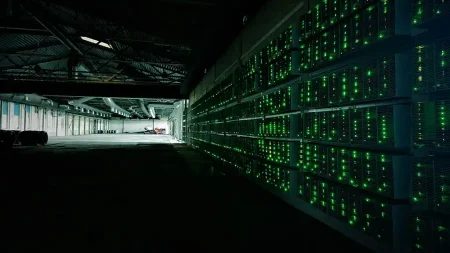A single bitcoin transaction consumes the same amount of energy as an ordinary American home does in a month and generates about a million times the amount of carbon dioxide emitted by a single Visa transaction
Numerous individuals are bullish on cryptocurrencies such as Bitcoin, Ethereum, Dogecoin, etc. However, a heated discussion over the environmental effect of these currencies is now raging around the globe.
It is true that cryptocurrencies use a significant amount of energy and that this consumption is increasing daily; on an annual basis, they spend the same amount of energy as whole countries such as Finland, Malaysia or Sweden.
A single bitcoin transaction consumes the same amount of energy as an ordinary American home does in a month and generates about a million times the amount of carbon dioxide emitted by a single Visa transaction.

But, why do cryptocurrencies require such a large amount of energy?
They need this much of energy for “mining,” a process by which bitcoin is both created and accounted for. Meaning, instead of being cleared by, say, a bank, bitcoin transactions are recorded by a decentralized network—a blockchain– which makes this cryptocurrency truly energy-intensive.
In this process, miners compete to register the latest “block” of transactions by solving cryptographic puzzles. The first one to the solution is rewarded with freshly minted bitcoin and one also receives 6.25 bitcoins per block, which, at current values, are worth more than three hundred thousand dollars.
The energy intensity of crypto mining is a feature, not a bug. Just like mining for physical gold, mining for Bitcoin or another proof-of-work (PoW) cryptocurrency is designed to use large amounts of energy.
The requirements for both costly gear and a sufficient supply of energy to power that hardware establish entrance barriers, making it exceedingly difficult (but not impossible) for a small number of miners to gain control of a whole crypto network thus making them hacker proof.

Finding cheap electricity and the ramifications for the environment
However, because these crypto operations require “ample electricity,” miners continue to look for countries that can provide cheap electricity; but often this electricity is generated using fossil fuels, which contribute to various types of pollution and thus have a negative environmental impact.
For example, approximately 65 percent of mining operations are located in regions (primarily in China) that rely on (highly polluting) coal-fired power plants or hydroelectricity, both of which are inexpensive and low-taxed. According to to “Cambridge Center for Alternative Finance” estimates, coal accounts for 38% of Bitcoin’s miner power.
Kazakhstan, another nation that derives the majority of its energy from fossil fuels and accounts for 18% of global Bitcoin mining, is likewise largely reliant on fossil fuels, and when these data are added together, the negative environmental effect is obvious.
Also to blame are the machines
Regrettably, it is not simply the increased production and usage of “mine” computers that is causing negative effect, but also the fact that these machines are more energy-intensive, increasing the carbon footprint compared to the equipment utilized in the early years of Bitcoin.
Stoll et al. (2019) address this issue by stating that first-generation miners utilized central processing units (CPUs) in conventional personal computers with a computing power of less than 0.01 gigahashes per second (GH/s) and an efficiency of 9,000 joules per gigahashes (J/GH) but today these CPUs have been phased out in favor of devices with 0.1-25 GHz and 100-45 J/GH.
More carbon footprint…
Not only does the Bitcoin network suffer from energy and hardware issues. Additionally, substantial amounts of electronic waste are generated (e-waste). This is because Bitcoin mining is carried out using specialized (single-purpose) technology that becomes outdated around every 1.5 years.
Therefore, the issue is whether it makes sense to devote a Sweden’s worth of power to a virtual currency at a time when the world urgently needs to reduce carbon emissions. With the aforementioned inputs in mind, the answer is an unequivocal NO…
In case you missed:
- None Found










